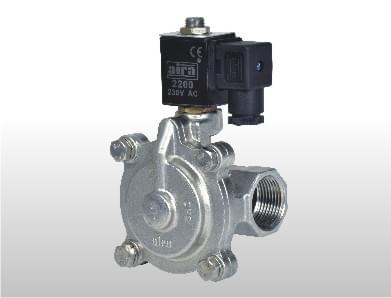They're in clothes washers, dishwashers, and programmed water system frameworks, otherwise called sprinklers. You'll try and track down them in the paintball business. Solenoid valves are basic gadgets that work to stop, discharge, portion, circulate, and blend liquids. They are significant parts of most pneumatic frameworks. While these valves are basic and modest, it very well might be confounding to pick the one most ideal for your requirements.
To completely comprehend how these solenoid valves work it's ideal to begin by understanding what a solenoid is. A solenoid is a loop that is firmly twisted into a helix. This curl is folded over a metallic center which when stimulated, makes an electromagnet. The more prominent the flow of power, the more impressive the electromagnet becomes. The excellence of an electromagnet, and what makes it not quite the same as an ordinary magnet, is that it can turn on and off. Consequently, solenoids work in frameworks that hook, lock, or trigger another component.
In this way, when a solenoid is important for a valve it sets off the opening and shutting of the valve. The power produced by the electromagnet moves around a cylinder all over which thusly stops and deliveries the progression of air, gasses, or fluids.
A portion of the professionals utilizing solenoid valves include:
- Quick and safe exchanging
- High unwavering quality
- Long help life
- The great medium similarity of the materials utilized
- Low control power
- Minimal plan
Solenoid valves come in various kinds to suit different stream rates, sorts of liquid, and assignments.
The two principal kinds of solenoid valves are immediate acting and pilot worked valves. Direct acting valves "straightforwardly" utilize the power supply from the electromagnet to open and close the valve. Then again, the pilot worked valves utilize the electromagnetic power joined with the strain of the streaming air/fluid/gas to open and close the valve.
Picking which solenoid part to utilize primarily relies upon the stream pace of the liquid utilized.
Since direct-acting valves depend entirely on the electromagnetic force of the solenoid, these sorts of valves turn out best for more modest stream rates. One of the advantages to utilizing these is that they possibly need to utilize full power while opening the valve. When the valve is open, these valves can stand firm on the open foothold in any event, while working on low power.
On the off chance that something that can endure a higher stream rate is required, then pilot worked valves will get the job done. These valves utilize the joined power of the electromagnet and the actual liquid to open and close the valve. You might be thinking about how this is even conceivable. Tim Hunkin from the exemplary show, The Secret existence of Machines, makes sense of it best.
The pilot worked valves require less energy to work yet they truly do have to hold full power to stay in an open state. Subsequently, they perform at a more slow rate than direct-acting valves. This, in any case, doesn't prevent pilot solenoid valves from being the most broadly utilized sort of solenoid valves.
Aira Euro Automation is the leading solenoid valve manufacturer in India. We offer various industrial valves like ball valves, control valves, plug valves, and many more.

Solenoid Valve Types
From the two primary sorts of solenoid valves stems a couple more varieties. They incorporate 2-way valves, 3-way valves, and 4-way valves.
These just demonstrate the number of ports the solenoid valve has. In a fundamental 2-manner solenoid valve, two ports are utilized on the other hand to allow stream and close it. In a 3-manner valve, two ports are utilized to allow stream and close it, while the third port is utilized to deplete pressure. A 4-way valve utilizes half of the ports to give pressure and the leftover ports to debilitate pressure. 4-way valves are commonly utilized with a double-acting chamber or actuator.
Another choice is whether to have the valve act in a "typically shut" state or a "regularly open" state. A "ordinarily shut" valve is the most well-known as it stays shut until a power source makes it open. A "regularly open" valve stays open until some sort of current is applied to close the valve.
Pneumatic Solenoid Valves versus Water-driven Solenoid Valves
Solenoid valves are utilized in both pneumatic and water-driven frameworks to control or manage the bearing of fluid or wind stream. Pneumatic solenoid valves manage air in a circuit while fluid (water-powered) solenoid valves control the progression of fluid. Pneumatic valves are otherwise called compacted air pilot valves.
Pneumatic solenoid valves are utilized in pneumatic frameworks to manage the directional progression of packed air (gas). Their plan comprises an aluminum body plan with a spool and tube-shaped opening. The aluminum body permits the valve to work proficiently and stay away from erosion. They are utilized in different applications, for example,
- Auto frameworks
- Vacuum frameworks
- Home warming units, and numerous other pneumatic frameworks
Pressure-driven solenoid valves are utilized in water-powered frameworks to control or change the progression of fluid. Their plan comprises solenoids on the two finishes of the chamber and a round and hollow spool to control the progression of fluid. Water-driven solenoid valves are utilized in the scope of uses, for example,
- Water supply frameworks
- Fuel/gas supply frameworks
- Large equipment in development and other pressure-driven frameworks

